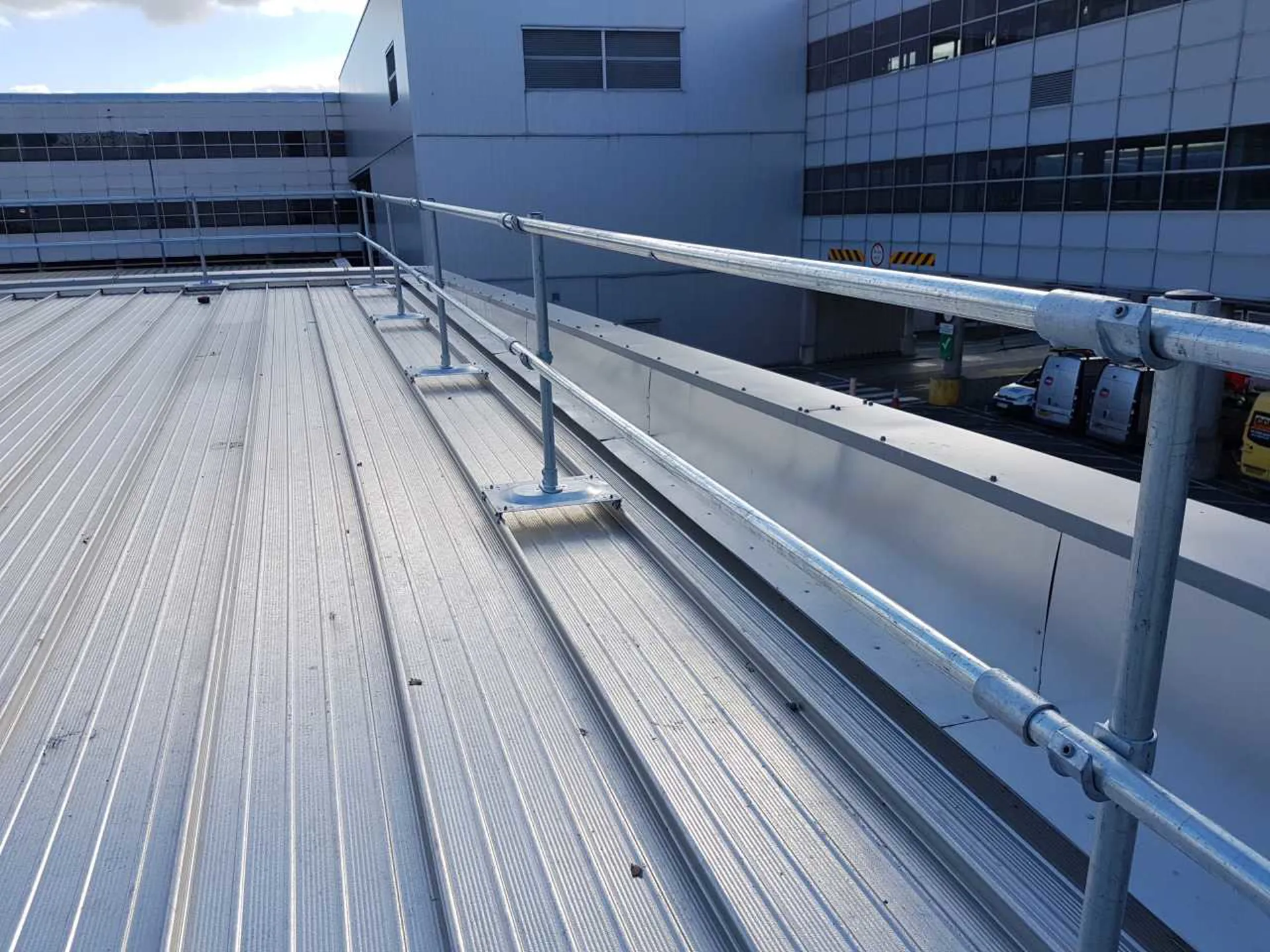

Safety is paramount when it comes to working at heights, and one of the most comprehensive approaches to ensuring safety is by following the Hierarchy of Fall Protection. This gold-standard of safety procedures is essential for minimizing risks and maximizing safety on rooftops. In this guide, we will delve into the four levels of the Hierarchy of Fall Protection and provide recommendations for implementing a complete system solution.
The first step in maximizing rooftop safety is to inspect the roof site for potential fall hazards. An expert should conduct this inspection and identify all possible risks. Once the hazards are identified, complete fall protection systems can be recommended, descending down the four levels of the hierarchy—from simple, sensible approaches for eliminating risks all the way down to lifesaving personal protection systems.
Using the example of the hazards associated with a rooftop skylight, here is an example of the using the Hierarchy of Fall Protection to ensure safety.

Implementing a comprehensive rooftop safety solution involves following the Hierarchy of Fall Protection. By starting with hazard elimination and working down to fall arrest systems, you can ensure the safety of everyone working at heights. Remember, Collective Systems require no additional training to use, while Work Restraint and Fall Arrest Systems require a high level of user competency, training, and additional inspection to be used effectively.
For more information on rooftop safety solutions and the Hierarchy of Fall Protection, contact one of our Safety Solution Professionals today.

What is the most effective method in the Hierarchy of Fall Protection?
The most effective measure in the Hierarchy of Fall Protection is hazard elimination. This involves identifying potential fall risks and making necessary modifications to procedures, practices, or locations to completely remove the hazards. By prioritizing this step, businesses can significantly enhance workplace safety.
What are collective measures in the context of fall protection?
Collective measures, also known as passive fall protection systems, are used when hazard elimination isn't feasible. These measures include physical barriers such as railings or guardrails that provide a physical barrier between the worker and the fall hazard. They require minimal training and reduce the risk of human error, making them a highly effective solution for fall protection.
How do work restraint systems contribute to fall protection?
Work restraint systems are employed when hazard elimination or collective measures aren't possible. These systems use personal fall arrest equipment to prevent workers from reaching the edge of a fall hazard, thereby preventing falls from occurring in the first place. They offer an added layer of protection in the hierarchy of fall protection.
What is the role of fall arrest systems in fall protection?
Fall arrest systems are used when the other levels of the Hierarchy of Fall Protection are unfeasible. These systems engage after a fall has occurred to slow a worker's descent, minimizing impact and preventing a collision with the ground. However, they are considered the least desirable choice due to potential equipment failure and the necessity of a rescue plan.
Why is planning and consideration important in implementing the Hierarchy of Fall Protection?
Proper planning and consideration of fall protection solutions are crucial in maintaining workplace safety. This includes conducting regular hazard assessments, providing ongoing safety training, and ensuring compliance with safety standards. Companies should also prioritize product innovation and testing to continually enhance their safety solutions.

Understanding the Hierarchy of Fall Protection and its various levels can help businesses effectively address fall hazards in the workplace. By investing in these safety measures, companies can foster a culture of safety, ensure regulatory compliance, and protect the well-being of their employees.
Ensure compliance with safety standards by scheduling a consultation with our expert team.

Please fill in your details below and we’ll be in touch shortly.